Kia Niro: Engine And Transaxle Assembly / Engine And Transaxle Assembly Repair procedures
| • |
Be sure to read and follow the “General Safety Information and
Caution” before doing any work related with the high voltage system.
Failure to follow the safety instructions may result in serious
electrical injuries.
|
| • |
Be sure to shut off the high voltage circuit according to the
“High Voltage Shut-off Procedures” before doing any work related
with the high voltage system to avoid serious electrical injuries.
|
|
| • |
Use fender covers to avoid damaging painted surfaces.
|
| • |
To avoid damage, unplug the wiring connectors carefully while
holding the connector portion.
|
| • |
To release the fuel system pressure before removing the engine
assembly, start the engine with the fuel pump relay removed. And
then turn off the ignition switch after engine stops.
|
|
|
Mark all wiring and hoses to avoid misconnection.
|
| 1. |
Shut off the high voltage circuit.
(Refer to Engine Mechanical System - “High Voltage Shut off Procedure”)
|
| 2. |
Remove the engine cover.
(Refer to Engine and Transaxle Assembly - "Engine cover")
|
| 3. |
Remove the air cleaner assembly.
(Refer to Intake and Exhaust System - "Air Cleaner")
|
| 4. |
Remove the engine room under cover.
(Refer to Engine and Transaxle Assembly - "Engine Room Under cover")
|
| 5. |
Drain the engine coolant.
(Refer to Cooling System - "Coolant")
|
| 6. |
Drain the inverter coolant.
(Refer to Hybrid Motor System - "Coolant")
|
| 7. |
Disconnect the radiator upper hose (A).
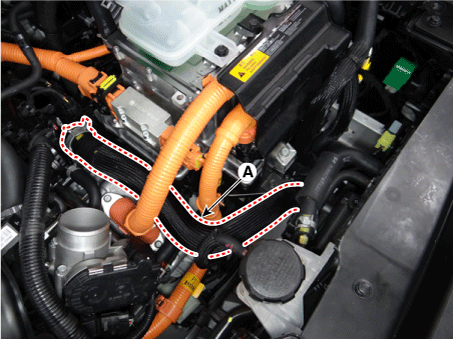
|
| 8. |
Disconnect the radiator lower hose (A).
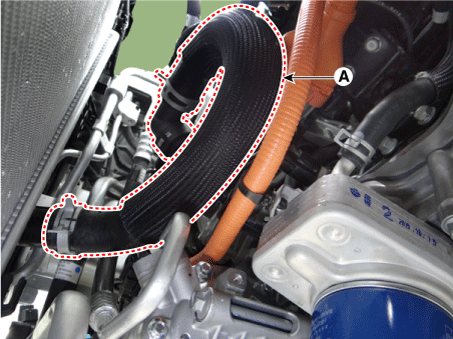
|
| 9. |
Remove the hybrid power control unit (HPCU) and tray.
(Refer to Hybrid Control System - "Hybrid Power Control Unit (HPCU)")
|
| 10. |
Disconnect the reservoir tank coolant hose (A).
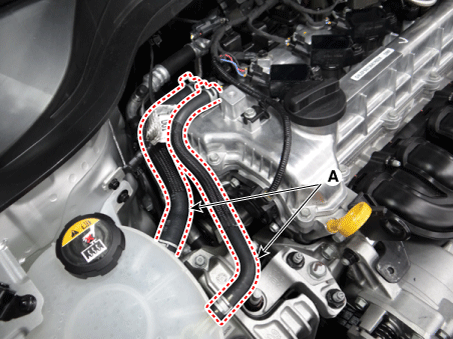
|
| 11. |
Disconnect the hybrid starter generator (HSG) water hose (A).
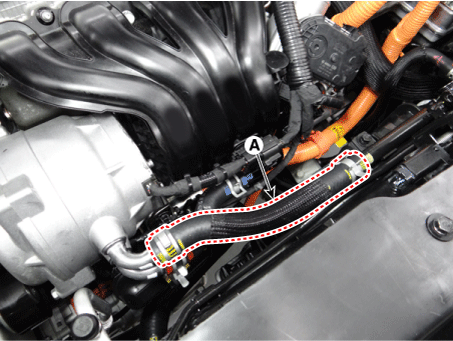
|
| 12. |
Disconnect the electric water pump (EWP) coolant hose (A).
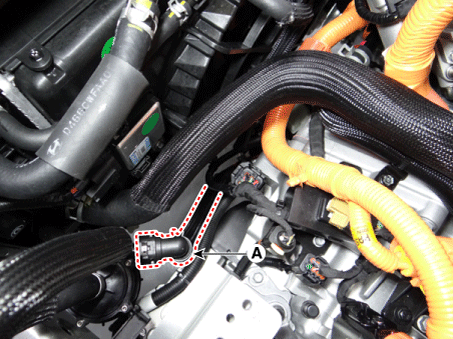
|
| 13. |
Remove the high pressure fuel pump foam (A).
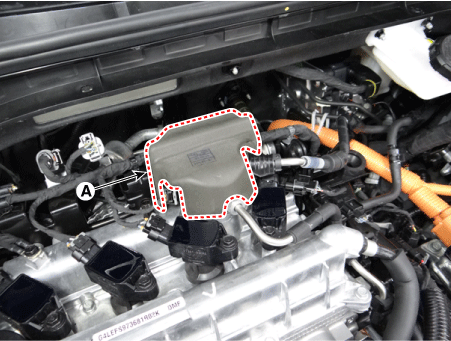
|
| 14. |
Disconnect the fuel hose (A) and purge control solenoid valve (PCSV)
hose (B).
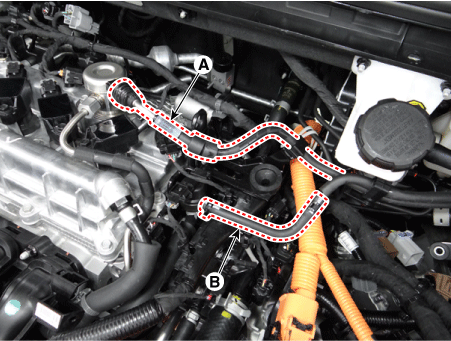
|
| 15. |
Separate the clutch reservoir tank (A).
|
Tightening torque :
3.9 - 5.9 N·m (0.4 - 0.6 kgf·m, 2.9 - 4.3 lb·ft)
|
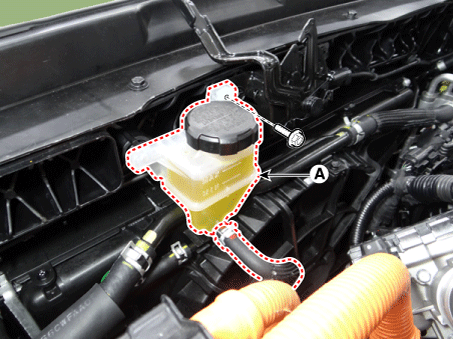
|
| 16. |
Remove the engine wiring.
| (1) |
Disconnect the ground cable (A).
|
Tightening torque :
10.8 - 13.7 N·m (1.1 - 1.4 kgf·m, 8.0 - 10.1 lb·ft)
|
|
| (2) |
Disconnect the fuse box main wiring connector (B).
|
| (3) |
Pull the main wiring protector (C) upward to remove it from engine
room.
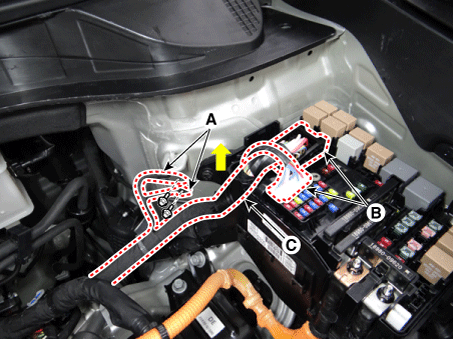
|
|
| 17. |
Disconnect the heater hose (A).
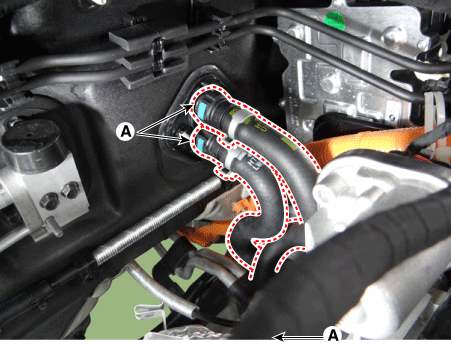
|
| 18. |
Remove the front muffler.
(Refer to Intake and Exhaust System - "Muffler")
|
| 19. |
Disconnect the wire harness connectors, control cables from the dual
clutch transmission.
(Refer to DCT(Dual Clutch Transmission) System - "DCT(Dual Clutch Transmission")
|
| 20. |
Remove the roll rod bracket (A).
|
Tightening torque
Bolt (B) :
107.9 - 127.5 N·m (11.0 - 13.0 kgf·m, 79.6 - 94.0 lb·ft)
Bolts (C) :
49.0 - 63.7 N·m (5.0 - 6.5 kgf·m, 36.2 - 47.0 lb·ft)
|
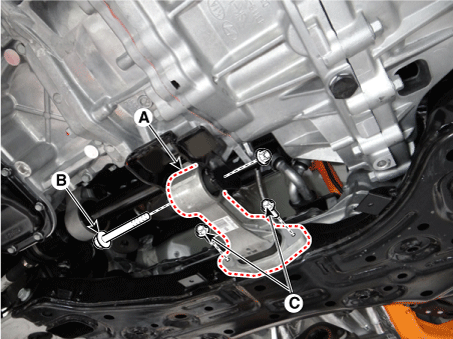
|
| 21. |
Remove the roll rod mounting support bracket (A).
|
Tightening torque :
49.0 - 68.6 N·m (5.0 - 7.0 kgf·m, 36.2 - 50.6 lb·ft)
|
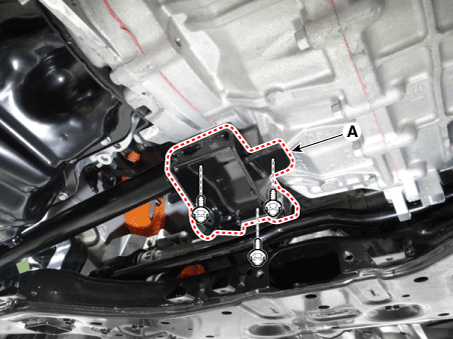
|
| 22. |
Remove the sub frame.
(Refer to Suspension system - "Sub frame")
|
| 23. |
Support the engine and transaxle assembly on a lift table.
|
| 24. |
Disconnect the ground cable (A).
|
Tightening torque :
10.8 - 13.7 N·m (1.1 - 1.4 kgf·m, 8.0 - 10.1 lb·ft)
|
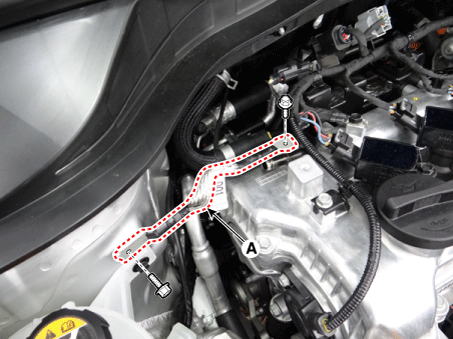
|
| 25. |
Remove the engine mounting support bracket (A).
|
Tightening torque
Nut (B) :
88.3 - 107.9 N·m (9.0 - 11.0 kgf·m, 65.1 - 79.6 lb·ft)
Bolt (C) and nuts (D) :
58.8 - 73.5 N·m (6.0 - 7.5 kgf·m, 43.3 - 54.2 lb·ft)
|
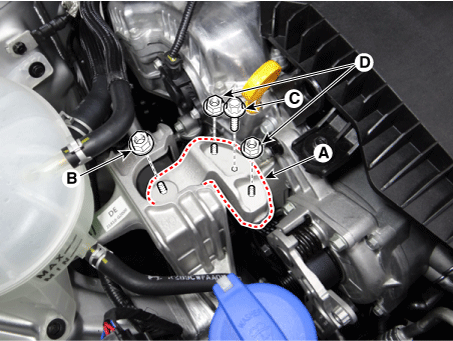
|
Do not reuse the bolt C, which is special bolt coated with bond.
|
|
| 26. |
Remove the dual clutch transmission ground cable mounting bolt (A).
|
Tightening torque :
10.8 - 13.7 N·m (1.1 - 1.4 kgf·m, 8.0 - 10.1 lb·ft)
|
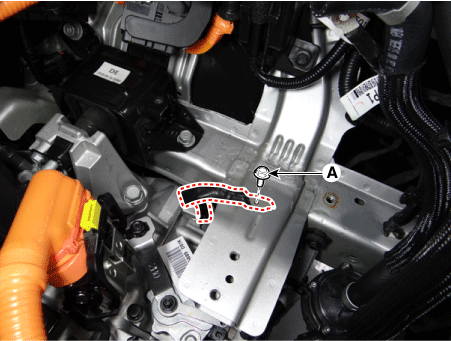
|
| 27. |
Remove the transaxle mounting side panel packing (A).
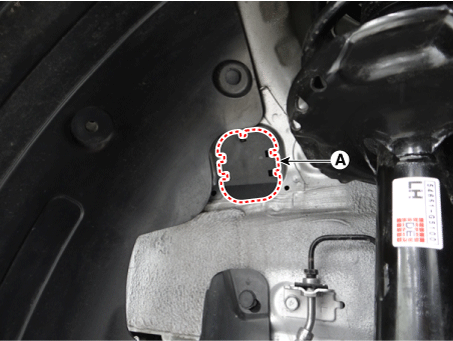
|
| 28. |
Remove the transaxle mounting bolts (A).
|
Tightening torque :
88.3 - 107.9 N·m (9.0 - 11.0 kgf·m, 65.1 - 79.6 lb·ft)
|
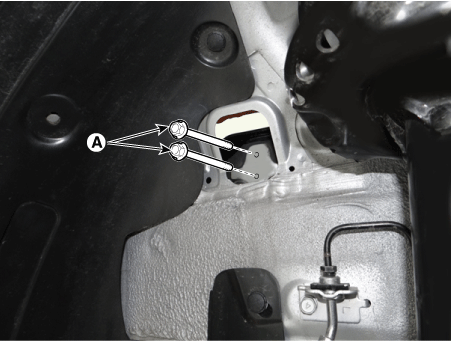
|
| 29. |
Remove the engine and transaxle assembly by lifting vehicle.
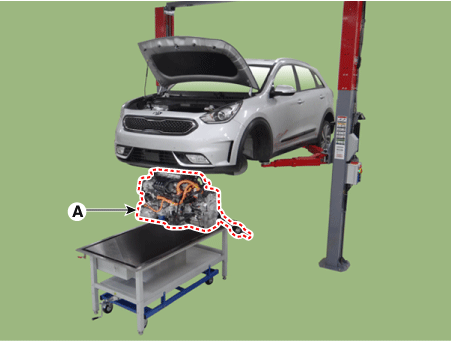
| •
|
Before removing the engine and transaxle assembly, make
sure hoses and wire connectors are disconnected.
|
| •
|
When removing the engine and transaxle assembly, be careful
not to damage any surrounding parts or body components.
|
|
|
Install in the reverse order of removal.
Add all the necessary fluids and check for leaks. Connect KDS/GDS. Check for
codes, note, and clear. Recheck.
| • |
Refill engine with engine oil.
|
| • |
Refill a transaxle with fluid.
|
| • |
Refill an engine radiator and a reservoir tank with coolant.
|
| • |
Refill an inverter radiator and a reservoir tank with coolant.
|
| • |
Clean battery posts and cable terminals and assemble.
|
| • |
Inspect for fuel leakage.
|
| – |
After assemble the fuel line, turn on the ignition switch (do
not operate the starter) so that the fuel pump runs for approximately
two seconds and fuel line pressurizes.
|
| – |
Repeat this operation two or three times, then check for fuel
leakage at any point in the fuel line.
|
| • |
Bleed air from the hybrid motor cooling system. (Refer to Hybrid
Motor System - "Coolant")
|
| • |
Bleed air from the engine cooling system.
|
| – |
Start engine and let it run until it warms up. (until the radiator
fan operates 3 or 4 times).
|
| – |
Turn Off the engine. Check the level in the radiator, add coolant
if needed. This will allow trapped air to be removed from the cooling
system.
|
| – |
Put radiator cap on tightly, then run the engine again and check
for leaks.
|
|
|
The HCU need to learn the mesh point for the engine clutch to reduce
shock while engine power is connected to the transaxle.
Perform the Clutch Pressure Sensor Calibration after installing the CPS,
HCU, engine or hybrid drive motor
(Refer to Hybrid Control System - "Hybrid Control System").
|
Removal and Installation
Engine Mounting Bracket
1.
Remove the engine room under cover.
(Refer to Engine and Transaxle Assembly - "Engine Room Under Cover")
...
 Engine Mounting Repair procedures
Engine Mounting Repair procedures





















